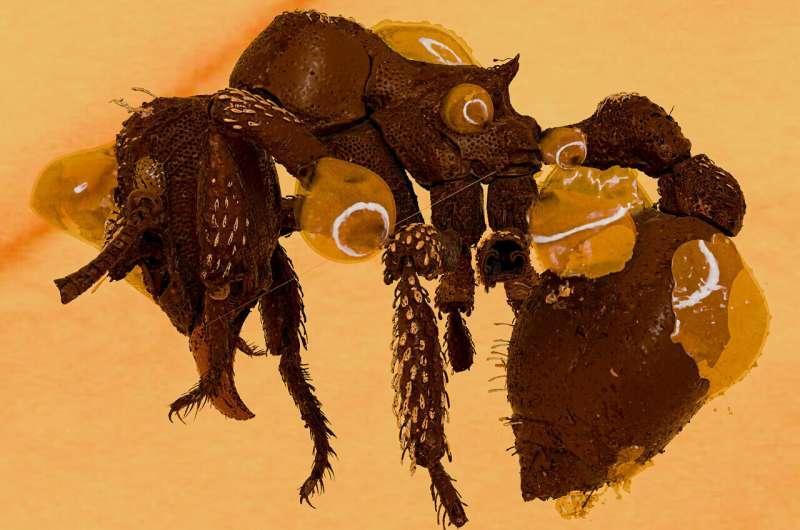
16-Million-Year-Old Dirt Ant Species Discovered
In a groundbreaking discovery, scientists from the New Jersey Institute of Technology have unearthed a 16-million-year-old fossil of a dirt ant species in the Dominican Republic. This remarkable find is not only a significant breakthrough in the field of entomology but also provides a glimpse into the ancient ecosystems of the Caribbean. The research team’s findings have been published in the prestigious journal Proceedings of the Royal Society B.
The fossil, which measures just over 5 millimeters in length, belongs to the species Basiceros enana, a long-extinct ant species that has never been seen before. The discovery is remarkable not only because of its age but also because it is the first-ever fossil of a dirt ant from the Caribbean region.
The research team led by Dr. Juanita Rodriguez, a renowned entomologist, discovered the fossilized ant trapped in 16-million-year-old amber in the Dominican Republic. Amber is a natural resin that forms when tree sap hardens and becomes fossilized over time, often preserving insects and other small organisms.
“This is a truly significant discovery,” said Dr. Rodriguez in an interview. “The fact that we have found a fossil of a dirt ant from the Caribbean is a major breakthrough, and the fact that it’s 16 million years old is simply astonishing. It’s a testament to the importance of preserving our natural history and the potential for new discoveries that can shed light on the past.”
The discovery of Basiceros enana provides a unique opportunity to study the evolution and diversity of ants over millions of years. Ants are one of the most successful and widespread groups of insects, with over 12,000 species found on every continent except Antarctica. However, until now, very little was known about the evolutionary history of ants in the Caribbean.
The researchers used advanced techniques, including X-ray computed tomography (CT) scans and 3D modeling, to study the fossilized ant. They found that Basiceros enana was a small ant, measuring just over 5 millimeters in length, with a distinctive shape and structure that is unlike any modern ant species.
“The fossil is incredibly well-preserved, allowing us to study the details of its anatomy and behavior,” said Dr. Rodriguez. “We were able to see the tiny hairs on its body, the shape of its mandibles, and even the structure of its eyes. It’s like looking at a tiny, ancient insect in high definition.”
The discovery of Basiceros enana also provides insights into the ancient ecosystems of the Caribbean. The region was once home to a diverse range of flora and fauna, including giant sloths, saber-toothed cats, and even early humans. The discovery of this ancient ant species suggests that ants were an important part of these ecosystems, playing a crucial role in the decomposition and recycling of organic matter.
“This discovery is a reminder of the importance of preserving our natural history and the potential for new discoveries that can shed light on the past,” said Dr. Rodriguez. “We are constantly learning new things about the world around us, and this discovery is a testament to the power of science to uncover the secrets of the past.”
The research team’s findings have been published in the journal Proceedings of the Royal Society B, a prestigious publication that has been dedicated to publishing original research in the biological sciences for over 300 years. The article, titled “A 16-million-year-old ant fossil from the Caribbean: A new species of Basiceros (Formicidae: Amblyoponinae)”, is available online and provides a detailed description of the fossilized ant and its significance.
In conclusion, the discovery of Basiceros enana is a remarkable breakthrough in the field of entomology and provides a unique opportunity to study the evolution and diversity of ants over millions of years. The fossilized ant is a testament to the importance of preserving our natural history and the potential for new discoveries that can shed light on the past.
Source:
https://royalsocietypublishing.org/doi/10.1098/rspb.2024.2171






